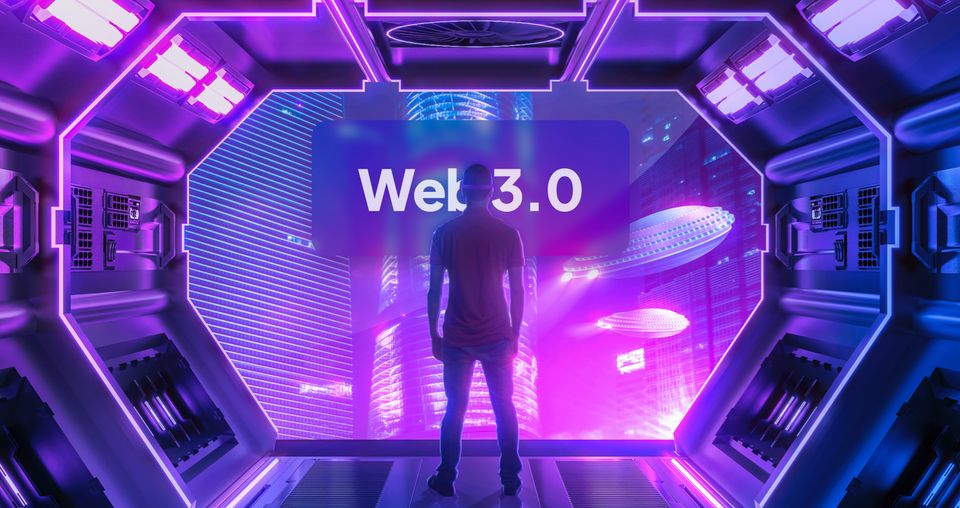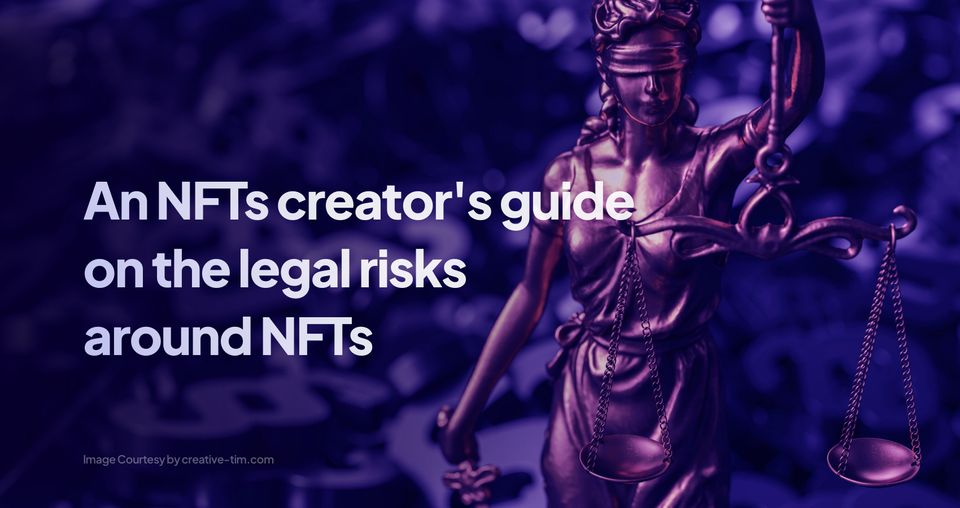Anyone who knows what the World Wide Web (WWW) is, has certainly heard the term Web 3.0 being thrown around frequently lately. In simple terms, Web 3.0 is simply the next, decentralized iteration of the web, which is set to see extensive use of blockchain-like technology.
How has the Web evolved from Web 1.0 to Web 3.0?
Before understanding the ins and outs of Web 3.0, it makes sense for us to understand what the web was in the past, currently looks like in the present, and how it contrasts with what it can be in the future.
What is Web 1.0?
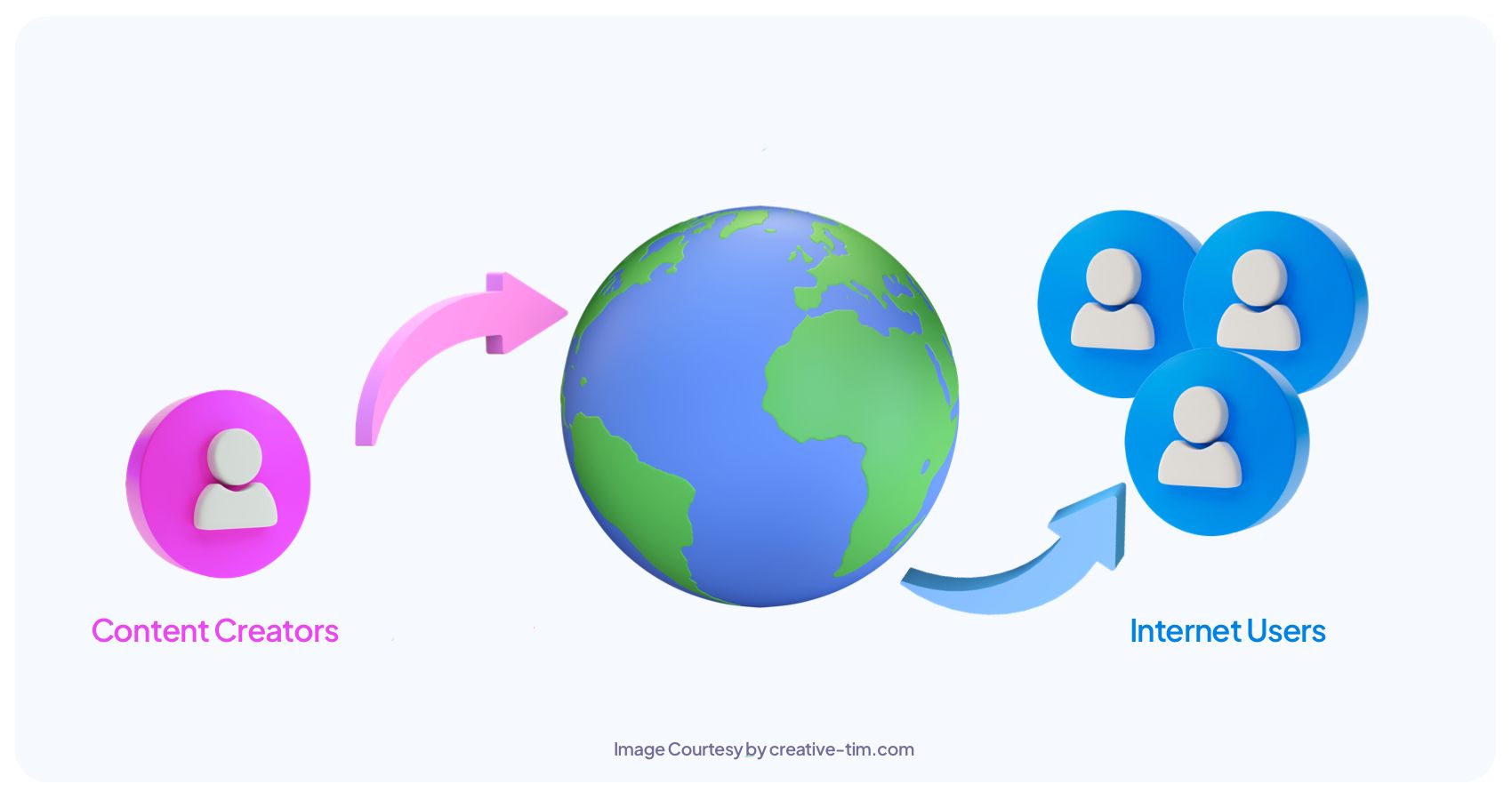
The WWW was invented by Tim Berners Lee in 1980, whereby. It started when he created a simple project which allowed one page to reference other pages in the same system using hyperlinks. His idea gained momentum slowly but surely, and a combination of technologies, browsers, and protocols gave rise to an era of information sharing which is now referred to with the retronym Web 1.0.
Web 1.0 or Syntactic Web was the first stage of the WWW which is attributed to be in between 1991 to 2004. In the Web 1.0 era, the vast majority of users in the WWW were consumers of content. In other words, there were very few creators who were behind the WWW while users were only allowed to view or read the content provided by these content creators. Web 1.0 used static HTML where the content was provided by using frames and tables instead of using dynamic languages. Data was stored in filesystems rather than relational databases.
The Ultimate UI/UX Design Course - Take your best practices to the next level with our fully coded examples included! ⏰ 80% OFF Special Offer
Web 1.0 did not have the option of allowing users to communicate with content producers. It was very common to have static websites and personal sites where content creators simply fed information to users without ever communicating with them. This drawback led to the evolution of Web 2.0.
📝 Web 1.0 vs Web 2.0 vs Web 3.0. What are the differences?
What is Web 2.0?

Web 2.0 (also known as the read-write web or as the social web), is a version of the web that we see today. It came about with the advent of social networking sites like Facebook, Twitter, and Instagram, but is not just limited to that.
In Web 2.0, websites allow users to provide feedback to content producers, and focus on user-generated content, interoperability, and participation. Users can both provide and control the data they can share on Web 2.0 pages, thus providing a rich user experience. Web 2.0 also saw the advent of Software as a Service (SaaS) models, mass participation, free classification of information, and dynamic programming technologies like HTML5, CSS3, and JavaScript-based frameworks. This contrasts greatly with Web 1.0 websites, which limited users to viewing content passively.
🚀 Creative Tim will launch soon its NFTs collection for Developers and Designers
Why do we need Web 3.0?
Web 2.0 generated a wave of user-centric information and gave more control to users in general. It changed the paradigm by turning consumers into content creators and changed how we interact with the world.
However, people are still under the assumption that a small group of companies: Alphabet (Google), Amazon, Meta (former Facebook), Apple, and Microsoft, have control over all data and content shared in the world.
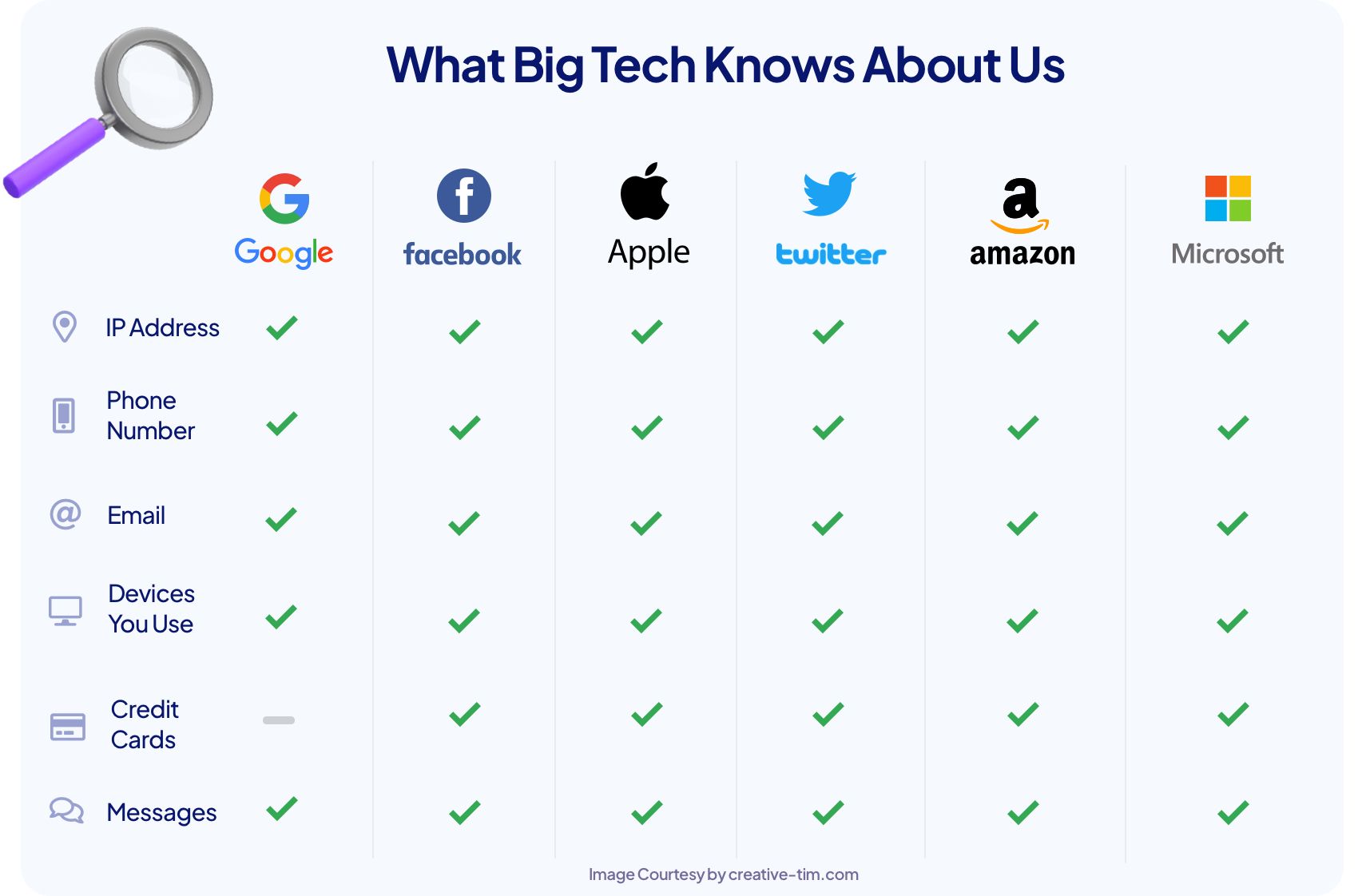
In essence, Web 2.0 is thought to have the following issues:
Compromised Security
In Web 2.0, users are at the mercy of the Big Tech companies which can easily use and misuse their data for economic benefits. Do you remember The Cambridge Analytica Scandal? While the services of these Big Tech companies are free at first, the monetization model for these companies is based on gathering personal user information, providing this information to third parties, and subjecting users to target marketing practices.
Censored Information
Yet another issue with Web 2.0 is censorship. The Big Tech companies can censor the information created by individual users, and can also filter the type of information that users can access. This mechanism contrasts greatly with why Web 2.0 was introduced and can lead to obscured truth, and the adoption of views and principles that the Big Tech prefer. Let's remember that the Former USA President - Donald Trump - was locked out of his Twitter account in 2021 and remained banned until today.
Economic Benefits for Digital Giants
Since the Big Tech companies can gather user content and get the revenue out of it, the economic benefits of user created content is centralized to these companies.
Also, the take-rates of web 2.0 giants are extortionate. See below a comparison between web 2.0 and web 3.0 take-rates. Looks crazy, right?
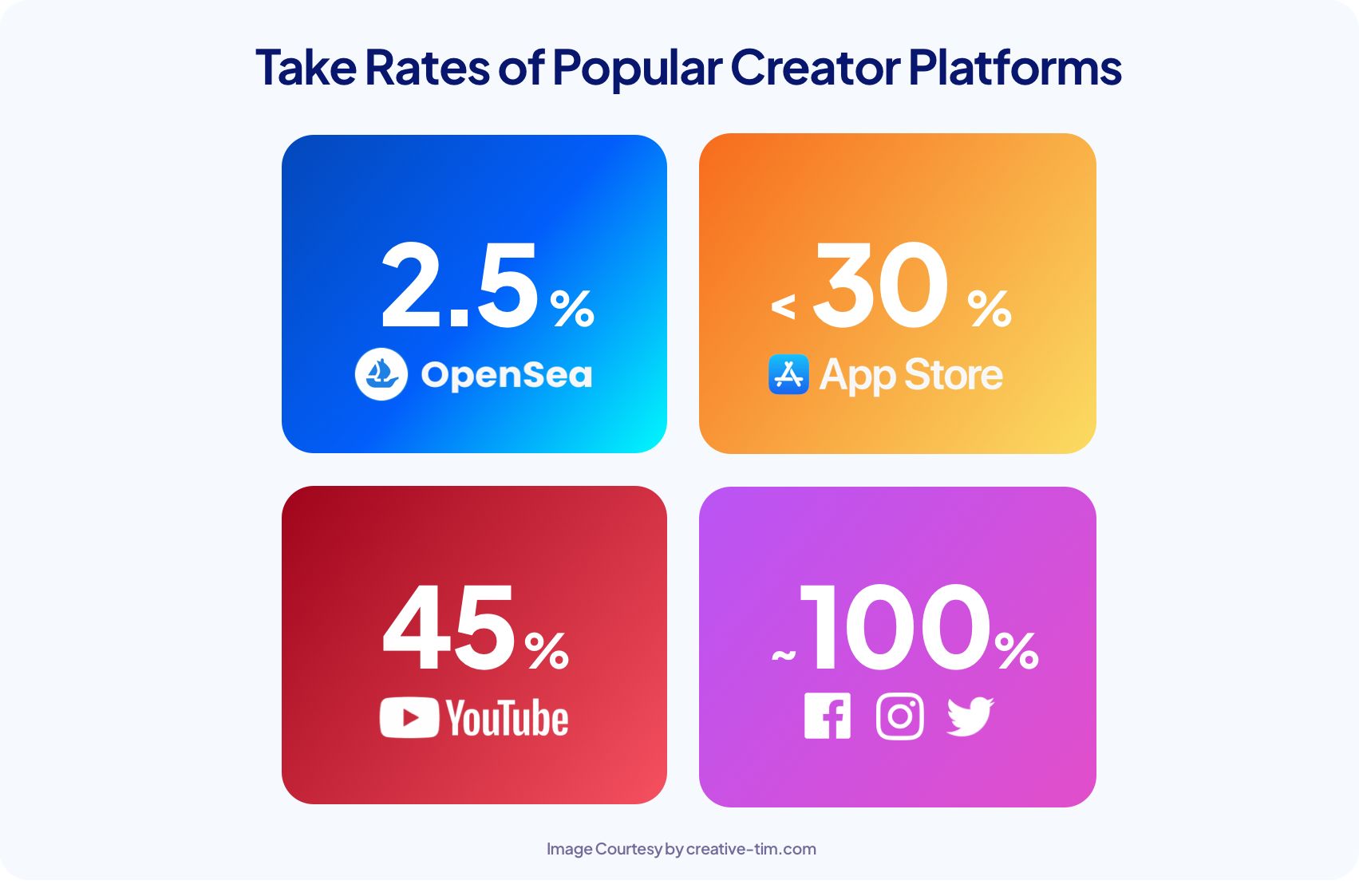
Centralized Finances
In addition to the above issues, Web 2.0’s financial system is also centrally managed by central banks and financial institutions, thus making users use intermediary services, share their personal data, and pay charges to these intermediaries for transferring their payments.
So, what exactly is Web 3.0?
In contrast with Web 2.0, Web 3.0 (also known as read-write-own web) is an era dominated by blockchain-like technology, Metaverse, NFTs, Machine Learning (ML), and Artificial Intelligence (AI).
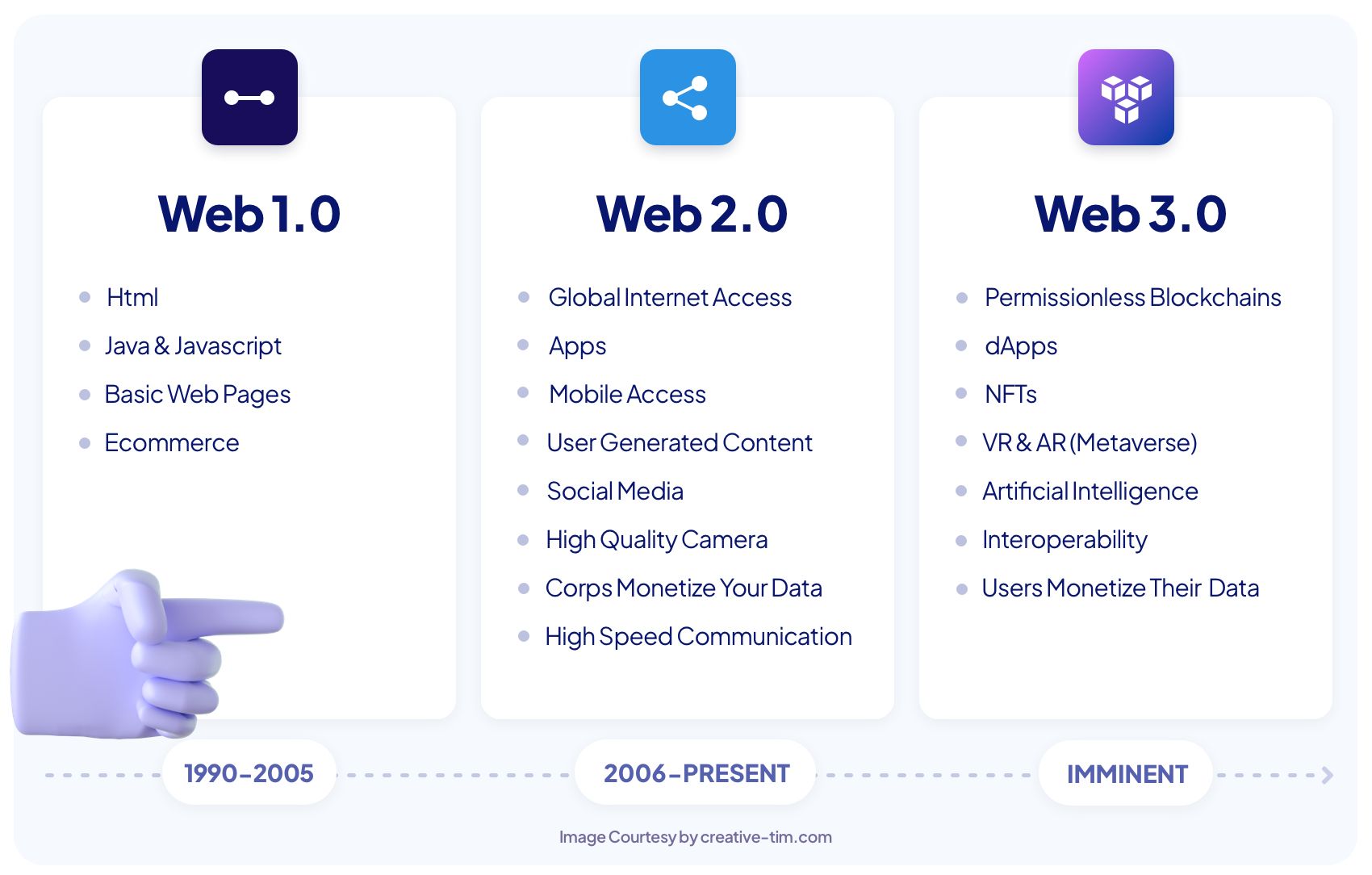
The term was founded by Polkadot founder and Ethereum co-founder Gavin Wood, and it is a concept that introduces the concept of decentralizing the control of content and data from Big Tech companies to users.
The Web 3.0 concept uses blockchain technologies as the base of everything you do online. Content and data owned are controlled by decentralized autonomous bodies, and there is no censorship of information by the Big Tech companies. Some characteristics of Web 3.0 include:
- Twitter can censor any account or tweet in Web 2.0, but Web 3.0 tweets are not censored.
- Web 3.0 payments are token-based and do not require sharing any personal data with third parties. In the absence of a centralized control, there are no intermediaries to pay.
- Web 3.0 servers are not controlled by the Big Tech and are instead based on a decentralized network of 1000s of computers. Hence, in the absence of a single point of failure, Web 3.0 servers never go down.
- User authentication occurs via blockchain-based private keys.
What are the pillars of Web 3.0?
The pillars of technology that give Web 3.0 its characteristics are:
Artificial Intelligence and Machine Learning
Artificial Intelligence and Machine Learning were started in Web 2.0 as concepts. They are influencing every software category in this day and time, and Web 3.0 isn't an exception in this case. Web 3.0 is based on Natural Language Processing (NLP) technologies which allow computers to understand and derive meaning from written and spoken words. While this has already started with spell check, autocomplete, and spam filtering, Web 3.0 is set to take it to the next level by developing intuitive computer capacities that exceed expectations.
Decentralization and blockchain
Decentralization is a concept whereby content, data, and services are strewn across independent computers all across the world instead of being solely dependent on the technologies of Big Tech. Decentralized systems run on peer-to-peer (P2P) protocols on independent operators all around the world. This can be achieved using blockchain.
🤖 Improve you Web 3.0 project with an AI Chatbot trained on your website data!
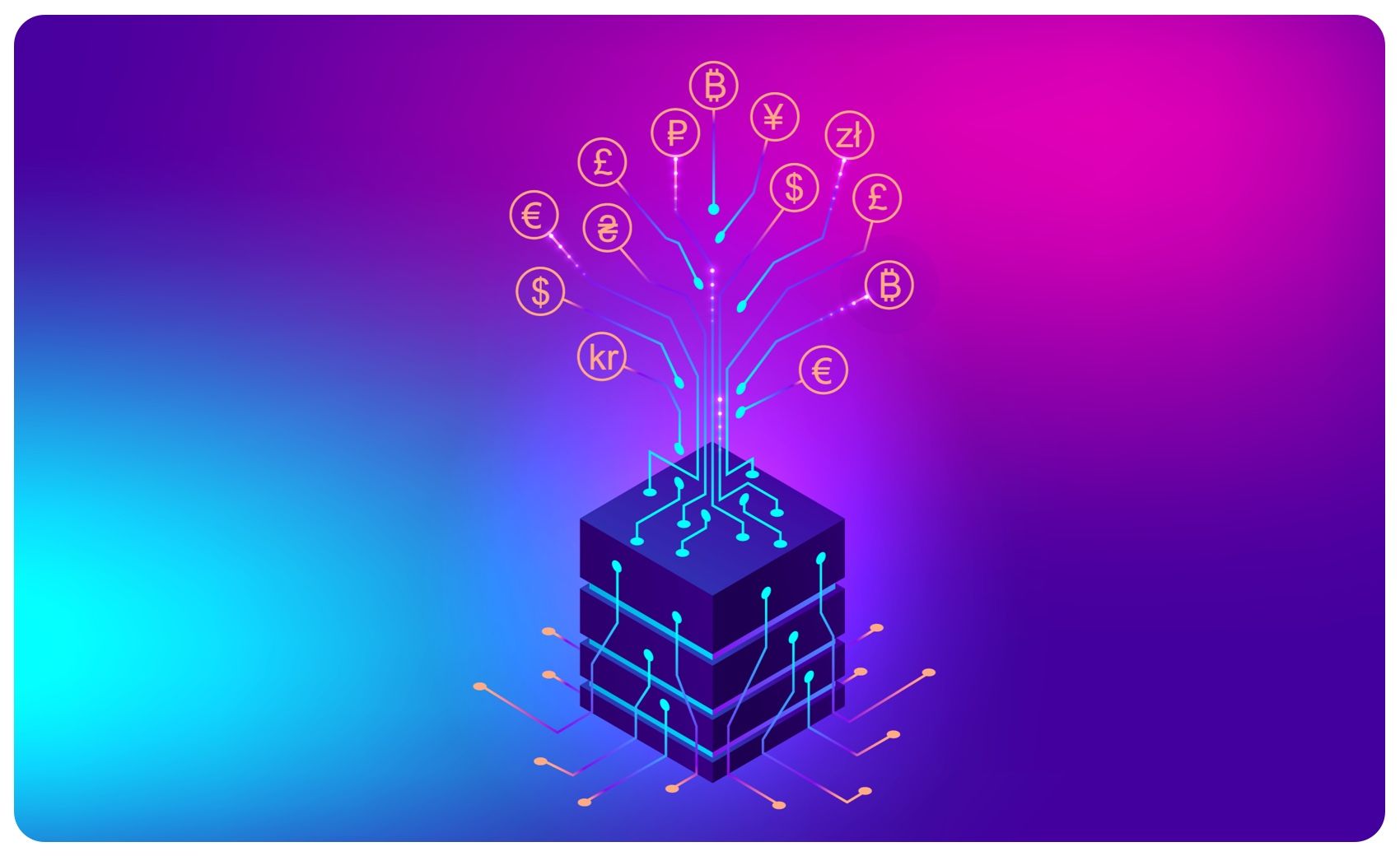
Blockchain technology provides a unique data set that is managed collectively using P2P transactions without the need for intermediaries. Blockchain is essentially a chain of blocks whereby each block consists of a cryptographic hash, timestamp, and transaction data of the previous block, which cannot be changed. Blockchain blocks are hence unalterable and are secure by design, proving to be a useful tool for decentralization and distribution.
Ubiquity
Ubiquity is a Web 3.0 concept that envisions systems to be available everywhere and anywhere using decentralization. Instead of depending on the Big Tech, in Web 3.0, ubiquity is achieved by using a combination of 1000s of autonomous computers, offline availability, edge computing, and other emerging technologies that reduce downtime and help systems run 24/7.
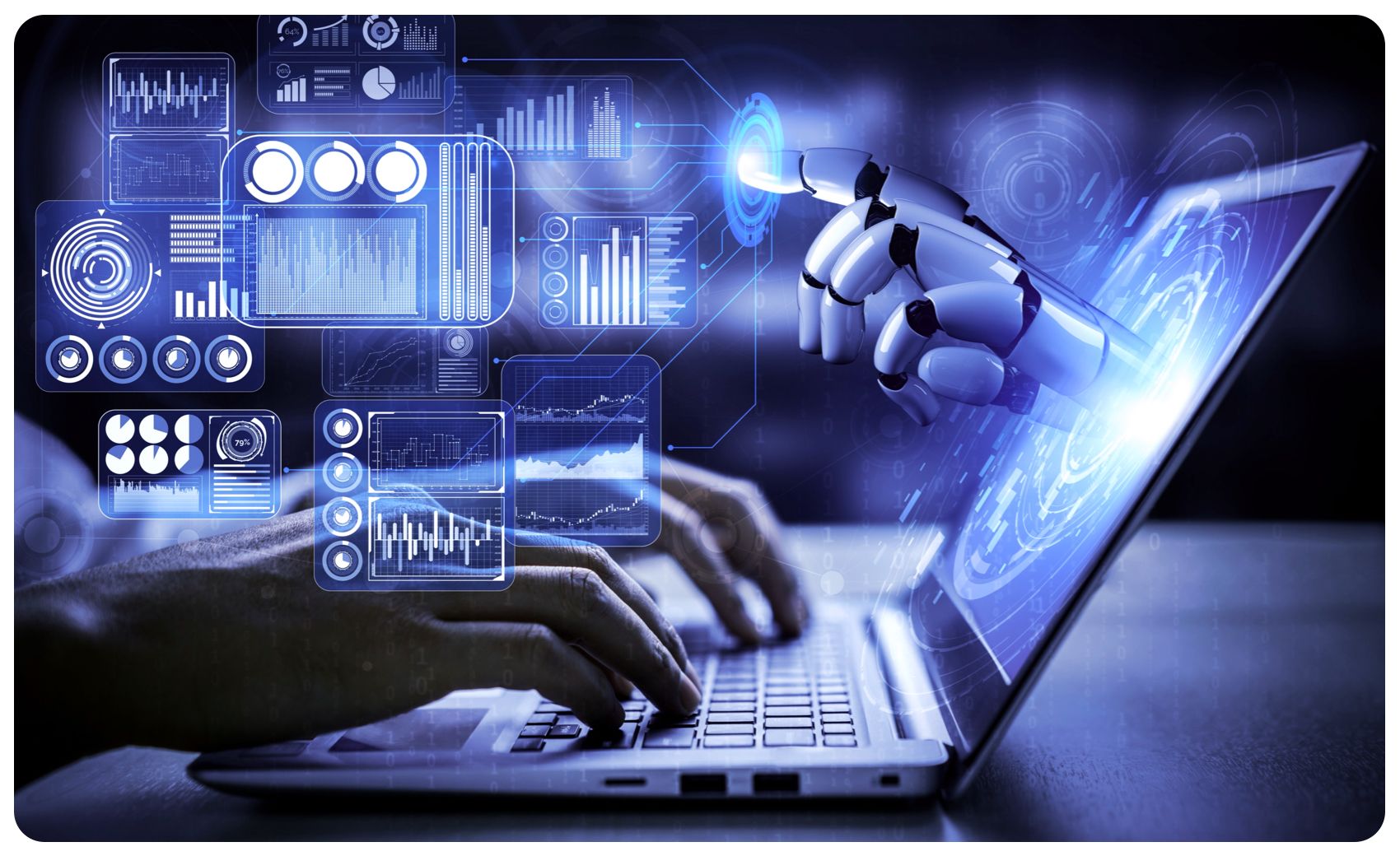
3D Graphics and Spatial Web
The natural transition from 2D graphics to 3D is also set to be a part of Web 3.0 technologies. Coupled with machine learning and NLP, the spatial web can merge virtual worlds with reality using AR/VR technologies, smart glasses, autonomous and sensors. Web 3.0 websites and software development technologies integrate Spatial Web and 3D graphics to new systems.
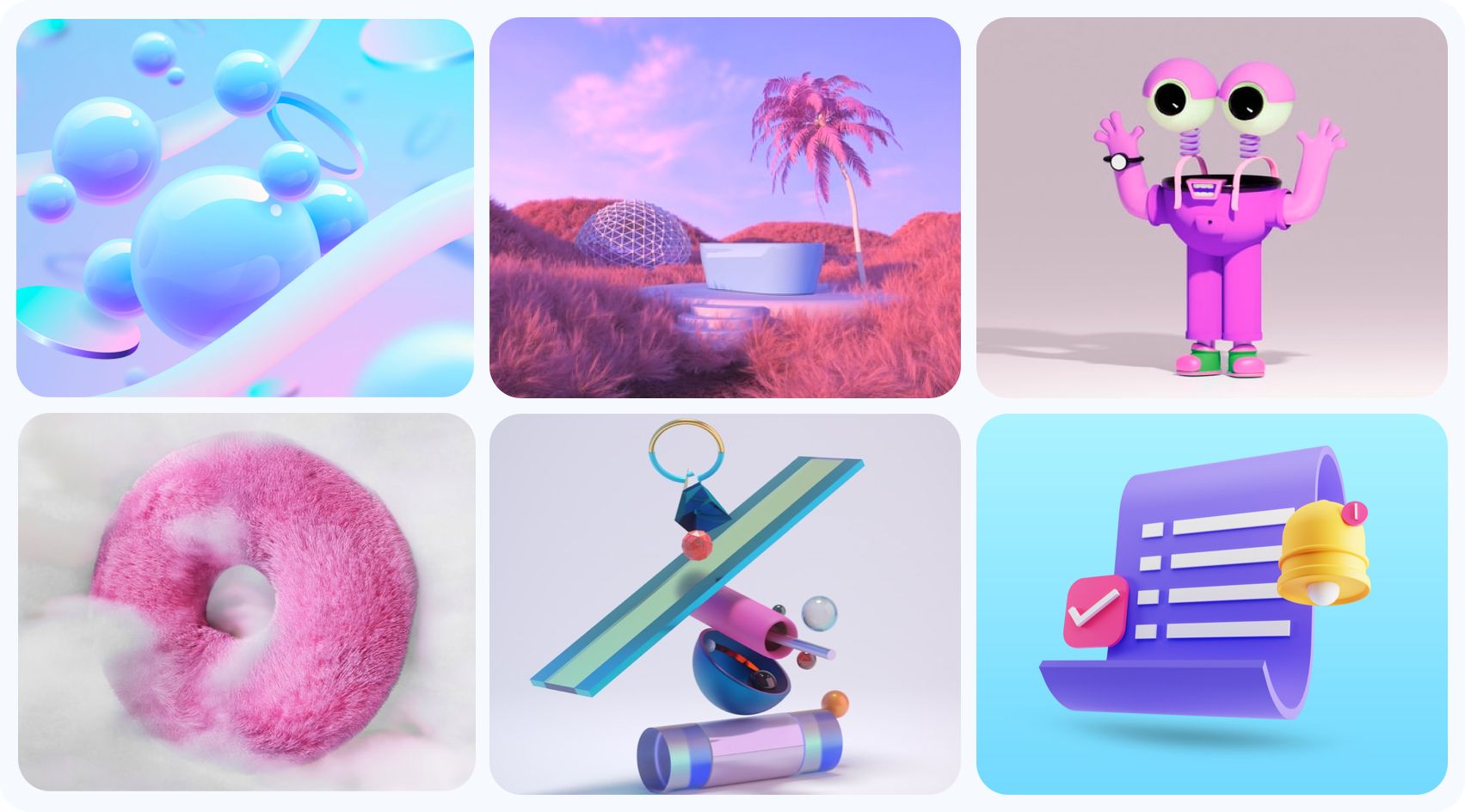
Why Web 3.0?
The goal of Web 3.0 is to make the web an open and equitable network where everybody can participate. The benefits of Web 3.0 are:
- Interoperability: With information from all ends of the web spectrum coming together, Web 3.0 can allow applications to work across different platforms and IoT devices, making them interoperable.
- Permissionless: Yet another benefit of Web 3.0 is the use of permissionless blockchains, which helps to reduce the limitations posed to users based on their geographic location, wealth, orientation, gender, or other demographics.
- Self-governance and distributed ownership: Web 3.0 does not require a central authority; thus decentralized apps, known as dApps cannot be filtered or censored. Additionally, this also ensures that ownership is distributed across all users in the network,
- Security: Distribution, decentralization, and the use of blockchain makes Web 3.0 more secure than its predecessors.
Which applications are in Web 3.0 today?
While Web 3.0 is defined as the next level iteration of the web, it is very much in progress and there are already applications that are adopting the practices and ideologies associated with Web 3.0.
- Alexa, Siri, and Bixby: Amazon’s Alexa, Apple’s Siri, and Samsung’s Bixby are all perfect examples of Web 3.0 and its potential in the future. These virtual assistants tick all the right boxes when it comes to understanding Web 3.0 by merging AI and NLP to create a semantically intelligent web app. All these AI-enabled assistants can understand voice requests and have the potential to perform even more complex and personalized commands in the future.
- Decentraland: Also referred to as the metaverse, Decentraland is a place where users can meet, socialize, attend events, and buy virtual land using cryptocurrency. It is an example of how Web 3.0 democratizes user-based rules and regulations by removing the middle man.
- DTube: DTube is a YouTube-style, decentralized corporation that puts the power in the hands of users without letting a centralized entity (such as Google in the case of YouTube) control which videos can be seen in users' feeds.
- Filecoin: Filecoin is a Google Drive style, open-source, personal, and decentralized storage solution which pays users who offer their spare storage space to the network.
- Steemit: Steemit is a social blogging site like Reddit where users get paid cryptocurrency for their content based on votes given by other users.
- Wolfram Alpha: Wolfram Alpha is yet another application in Web 3.0 today that answers user questions using computation instead of giving you a list of webpages like other search engines do. While search engines like Google are based on what the most popular search item is, Wolfram Alpha gives you exactly what you asked for. For example, if you search "France vs. Brazil" on Google and Wolfram Alpha, Google also gives you football-related results (since it is the most popular search), while Wolfram Alpha simply gives you the differences between France and Brazil.
More variation in apps by web 3.0 you can see in the image below:
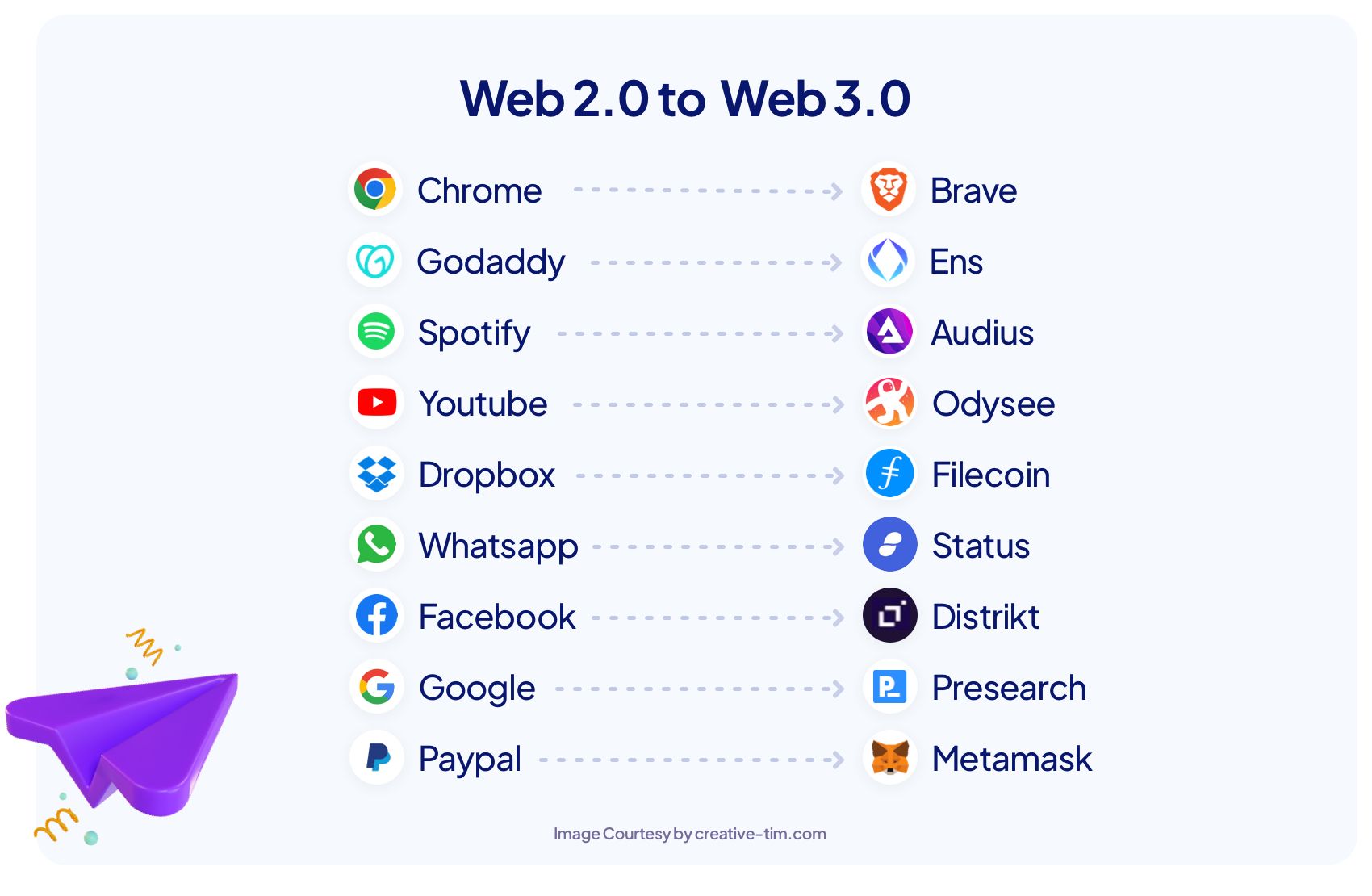
What do people think about Web 3.0?
While Web 3.0 promises to be the better, bigger version of the web as we see today, there are a lot of skeptics who are not ready to accept it as the next big thing. Jack Dorsey, the CEO of Twitter, blockchain technology pundit David Gerard, as well as Tesla CEO and tech billionaire Elon Musk, think that Web 3.0 is a marketing buzzword with no definite meaning. However, it does seem like the buzzword is creating some changes within Twitter, as Esther Crawford, a senior project manager at Twitter has mentioned that Twitter is studying ways to incorporate Web 3.0.
True Web 3.0 enthusiasts believe that there is no future for Facebook in Web 3.0. However, Facebook recently rebranded itself as Meta. Meta is focusing on "robust interoperability", to create a virtual metaverse, and CEO Mark Zuckerberg wants to build Facebook to be the next frontier in social connection by integrating VR experiences into Meta.
Alphabet (Google) CEO Sundar Pichai has also mentioned that he is watching the blockchain space, and would like to add value to the development of this new technology. He has mentioned that there are plans to bring services like Google Maps and YouTube to virtual worlds in the future but has not shared any definite plans yet.
What companies already entered Web 3.0?
Here is a list of 10 web 3.0 early adopters companies:
- Porsche - doing NFTs
- Bentley - doing NFTs
- Lamborghini - doing NFTs
- Forbes - doing NFTSs
- Cloudflare - preparing for Web 3
- ProductHunt - preparing for Web 3
- Mercedes-Benz - doing NFTs
- Premier League Teams - launching NFTs
- Agoric - Raised 50 million $ to help Javascript Developers go to blockchain
- A16Z - biggest VC in USA, prepared a 4.5 billion$ fund for Blockchain & Crypto
What is Web 3.0 in Conclusion
Some people call Web 3.0 a marketing gimmick with no real value, while some believe it to be the definite future of the web as we know it. No matter what people think, it is safe to state that the different supposed pillars of Web 3.0 technology are certainly gaining momentum in the tech space in the past few years.
Artificial intelligence, the use of blockchain, the advent of VR (Virtual Reality) are all independent pillars strengthening their bases in the tech world as we know it. Keeping in mind the huge leaps that technology has taken in the past few decades, it is not entirely impossible for all these technologies to come together and create the magical, distributed, decentralized future of the web that we can call the Web 3.0.
Are you interested in learning more about Web 3.0? Check out the following resources:
- Web 1.0 vs Web 2.0 vs Web 3.0. What are the differences?
- 25 Essential Web 3.0 Terms You Need to Know to Understand It
- What is Blockchain Technology and How Does it Work?
- Blockchains: Ethereum vs Solana vs Avalanche vs MultiversX (Elrond). What are the differences?
- Blockchains: Ethereum vs Solana vs Avalanche vs MultiversX (Elrond). What are the differences?

